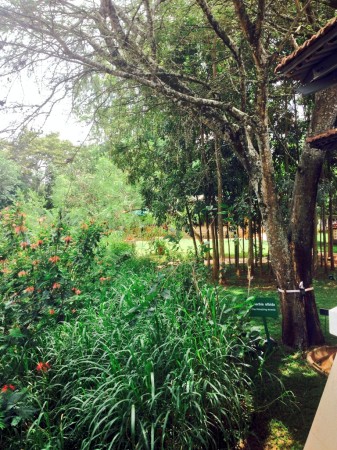- Banana germplasm gets around.
- Kenyan urban cows get around. Not local breeds, though…
- Can agriculture deliver both resilience and nutrition? FAO thinks so.
- Yeah, about that: we’re gonna need better data.
- Participatory varietal selection in Nepal. Not as novel as made out here, surely.
- Brazil nut gets it all.
- Today’s beer story comes from India.
- Sorting the sheep from the goats, the molecular way.
Nibbles: De Schutter, Madagascar beans, Beer!, Cocktails!, CIAT strategy, Segenet, FGR, Risotto again, Domestication, Quinoa, Medieval workplan, Late blight
- “Productivism” skewered one last time. Until the next time.
- The Malagasy Bean Renaissance. No, really.
- The science of beer foam. Now there’s no excuse.
- Cocktails can be biodiverse too. You bet they can.
- CIAT’s new strategy makes a splash. Genebank front and centre.
- New ICIPE director tells all. She used to work at CIAT, did you know?
- First edition of The State of the World’s Forest Genetic Resources is out. Now to do something about it.
- Italy’s traditional rices preserved. Yes, Italy’s, you heard me.
- Agriculture was invented in the current interglacial. Why then, and not in the Eemian?
- Quinoa macronutrients exzzzzzzzamined.
- Your what-to-do-now guide to the medieval farm. Progress? Not what it’s cracked up to be.
- People of the Toluca valley! Expect researchers looking for wild potato genes resistant to late blight.
Nibbles: Seed drying, Yield gap trap, African fermentation, Rice & temp, Cultural exchange, Youth, Syria and ICARDA
- How to keep seeds dry. Don’t do this at home, folks! No, wait…
- Don’t get trapped in the yield gap, researchers told.
- Diana Buja breaks down banana brewing.
- Night temperatures cross important threshold for rice.
- Cultural change does not have to mean genetic erosion and loss of agrobiodiversity knowledge.
- Getting youth back into agriculture. Not just about the money.
- Latest from the tragic ICARDA situation
Pigeon Foot sorghum unmasked
 You may remember my quandary over the meaning of the name of the sorghum variety Gadam El Hamam. Well, I had the opportunity of asking real experts at the ICRISAT office in Nairobi yesterday. They confirmed, first of all, that the Gadam sorghum that is being so successfully used in beer brewing in Kenya is indeed a selection from the Sudanese variety Gadam El Hamam. And after a quick email to their Sudanese sorghum breeder colleague based in Addis Ababa, we solved the mystery of the name. It turns out the correct transliteration is Gadam Elhmam, which means “Pigeon Foot” in Arabic. This is apparently a trope that is used in Sudanese poetry and songs to describe a beautiful lady. So I more or less had the bits, but I could not put them together. Thanks to all at ICRISAT in Nairobi for helping me do that at last.
You may remember my quandary over the meaning of the name of the sorghum variety Gadam El Hamam. Well, I had the opportunity of asking real experts at the ICRISAT office in Nairobi yesterday. They confirmed, first of all, that the Gadam sorghum that is being so successfully used in beer brewing in Kenya is indeed a selection from the Sudanese variety Gadam El Hamam. And after a quick email to their Sudanese sorghum breeder colleague based in Addis Ababa, we solved the mystery of the name. It turns out the correct transliteration is Gadam Elhmam, which means “Pigeon Foot” in Arabic. This is apparently a trope that is used in Sudanese poetry and songs to describe a beautiful lady. So I more or less had the bits, but I could not put them together. Thanks to all at ICRISAT in Nairobi for helping me do that at last.
Incidentally, the photo is of a beautiful Faidherbia albida tree on the ICRAF campus in Nairobi, which is where the ICRISAT regional office is housed. You may be able to make out from that the Napier grass and mulberries are taller and more lush just under the tree as compared to further back. They don’t call Faidherbia the cornerstone of “evergreen agriculture” (big PDF) for nothing.
Nibbles: Cowpea blogging, Rice vs wheat psychology, IRRI rice breeding, Wheat disease, African ag success, AGRA seed, Seed certification
- Omnibus edition of recent GCP blog posts on cowpea.
- Chinese rice farmers more sharing and caring than wheat farmers.
- Wonder if that will change with all these fancy new rice varieties coming through.
- Wonder if fusarium ear blight of wheat will change that.
- No such problems in Africa, no sirree.
- Not with all these AGRA-supported seed companies taking off.
- But there’s an international component to that which is being neglected.